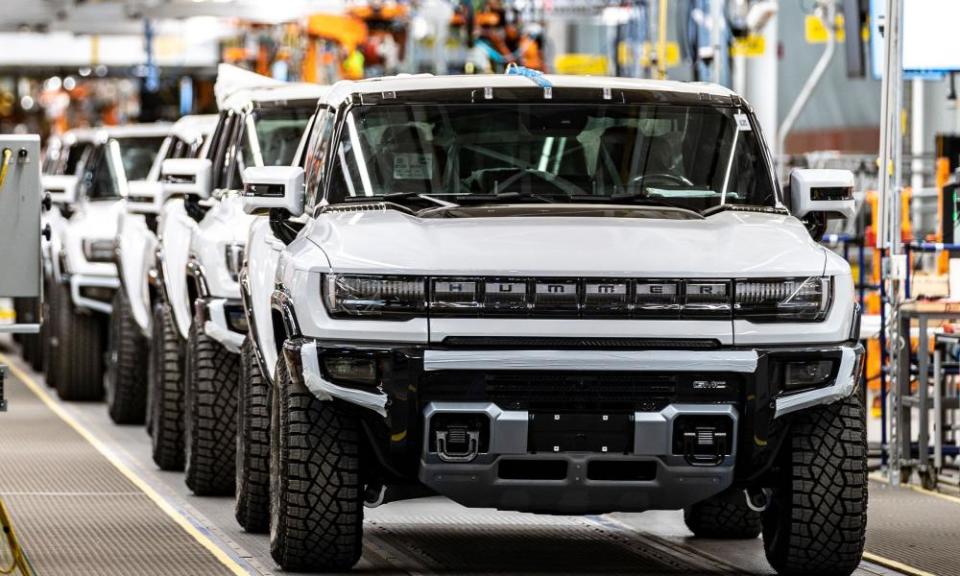US lags in electric vehicle sales despite Biden administration’s push

The Biden administration, in the midst of a major push to encourage the take-up of electric vehicles, has been provided a sobering reminder of how badly the US is lagging in the adoption of zero-emission cars.
The White House has set a goal for electric vehicles to make up 50% of all new car sales by the end of this decade in order to slash planet-heating emissions and help avert disastrous climate change.
But a new report has found that electric cars will make up just 4% of American sales in 2021, compared with 9% in China and 14% of new sales in Europe.
This is in line with a distinct recent trend – while electric vehicles are on the rise in the US, with the fleet climbing at an annual rate of 28% between 2015 and 2020, the other major car markets have pulled significantly ahead. The electric vehicle fleet grew at 51% a year in China over the same five-year period, while Europe has seen a 41% annual increase.
A lack of federal government support for electric vehicles, cheap gasoline prices in the US and a paucity of charging infrastructure is holding back progress, the report by ING found, with a drastic increase to nearly 9m zero-emission car sales needed by 2030 to hit the administration’s goal.
“What happened is that Europe set new carbon dioxide limits for cars while Donald Trump took the US backwards,” said Margo Oge, who previously oversaw vehicle regulation at the Environmental Protection Agency (EPA), in reference to the former president’s decision to weaken pollution standards for new vehicles. “The policies of the Trump administration are reflecting the US being behind. But the US can catch up if it does the right things.”
Joe Biden has sought to throw his weight behind electric cars, recently taking the new electric Hummer for a test drive at a GM plant in Michigan and declaring it “one hell of a vehicle”. On Sunday, Pete Buttigieg, the president’s secretary of transportation, further touted electric vehicles by stating that anyone buying one “will never have to worry about gas prices again”.
The administration is pinning its hopes on a vast $1.75tn reconciliation bill, which has yet to pass an evenly divided Senate, to drive uptake. The legislation provides tax credits of up to $12,500 for car buyers if they choose an electric vehicle. A separate infrastructure bill passed last month provided billions of dollars towards a Biden goal of installing 500,000 electric vehicle chargers across the country.
Meanwhile, the EPA is preparing to issue new regulations, set to be unveiled before Christmas, that will require more stringent fuel efficiency standards for new cars. The EPA is also expected to act upon an executive order signed by Biden that demands the 50% electric vehicle target is met.
The legislative and regulatory actions will, Oge said, help push carmakers such as Ford and GM, which have already set their own goals to phase out gasoline and diesel cars, to follow through with their promises. “If the White House gives that strong message I think companies will start really moving on this,” she said.
It’s still uncertain what level of electric vehicle incentive will come from the reconciliation bill, however, with the centrist senator Joe Manchin, a crucial swing vote, expressing opposition that the maximum $12,500 rebate depends on electric vehicles being made in the US by a union workforce.
Some carmakers have objected to this too, pointing out that barely any electric cars are currently made by unionized workers in the US. The plan would “severely limit consumer choice and adaptability”, according to a letter sent to senators by a dozen auto companies including Volkswagen, Honda and Toyota. Biden has said he wants “those jobs here in Michigan, not halfway around the globe” during a visit to a training center for UAW, the auto union, in October.

 money
money 